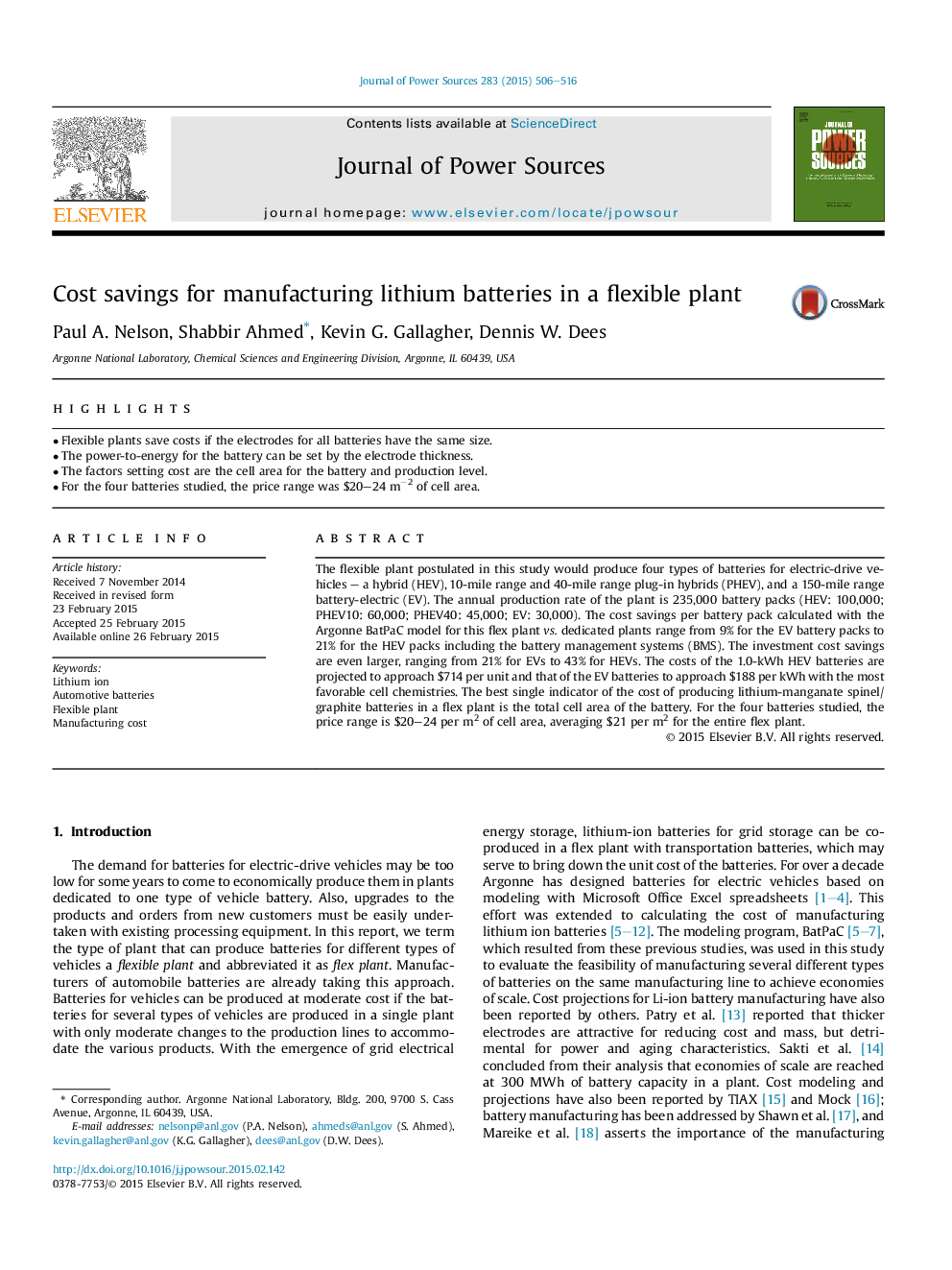| Article ID | Journal | Published Year | Pages | File Type |
|---|---|---|---|---|
| 1292851 | Journal of Power Sources | 2015 | 11 Pages |
•Flexible plants save costs if the electrodes for all batteries have the same size.•The power-to-energy for the battery can be set by the electrode thickness.•The factors setting cost are the cell area for the battery and production level.•For the four batteries studied, the price range was $20–24 m−2 of cell area.
The flexible plant postulated in this study would produce four types of batteries for electric-drive vehicles – a hybrid (HEV), 10-mile range and 40-mile range plug-in hybrids (PHEV), and a 150-mile range battery-electric (EV). The annual production rate of the plant is 235,000 battery packs (HEV: 100,000; PHEV10: 60,000; PHEV40: 45,000; EV: 30,000). The cost savings per battery pack calculated with the Argonne BatPaC model for this flex plant vs. dedicated plants range from 9% for the EV battery packs to 21% for the HEV packs including the battery management systems (BMS). The investment cost savings are even larger, ranging from 21% for EVs to 43% for HEVs. The costs of the 1.0-kWh HEV batteries are projected to approach $714 per unit and that of the EV batteries to approach $188 per kWh with the most favorable cell chemistries. The best single indicator of the cost of producing lithium-manganate spinel/graphite batteries in a flex plant is the total cell area of the battery. For the four batteries studied, the price range is $20–24 per m2 of cell area, averaging $21 per m2 for the entire flex plant.
